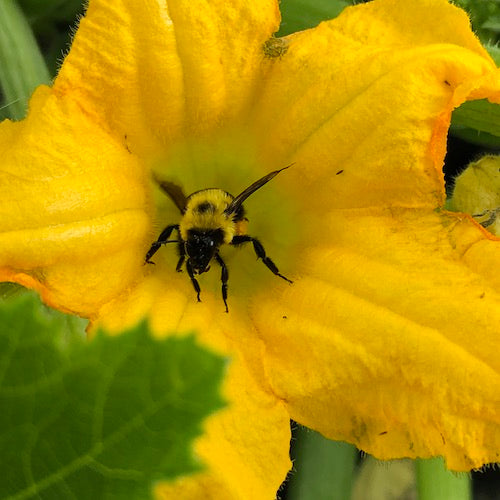It never feels good to have to say it, but summer does come to an end. Fortunately, much of the change of seasons comes in baby steps, with lots of warm, sunny days ahead. Still, shorter daylight hours and cooler overnight temperatures affect the way our gardens grow and getting to know how to "finish" August can both extend what we have flourishing now and present opportunities to keep on growing well into fall.
I'm going to break down the rest of this post into sections based on common gardening activities, and how they are different or important at this time of the year.

Agastache are magnificent late season herbs, with edible flowers, fragrant foliage and a habit of catching the warm colour of August light in a gorgeous way! This selection is called 'Sunset'. Some are annuals and some are winter hardy in zone 3.
Fertilizing
Plants require major and minor nutrients to be productive, and after a summer of intensive growth, some plants may leave you wondering if they require a dose of plant food. There are two rules of thumb to help you with this decision.
First, annual plants including ornamental and edible plants, do benefit from regular feeding right up until frost. It takes a lot of energy to produce flowers or fruit, and these plants put on their best show if they have all the nutrients they need right up to the end of their window for growing/producing. Different types of plants are more or less needy within the category of "annual", so pay particular attention to feeding things like tomatoes, squash, pumpkins, petunias and leafy herbs. The same fertilizing rule applies to container plants that you are planning to winter indoors; it helps significantly to have these plants in best condition before they come inside in September. There are many fertilizer choices, but the regular use of compost-based organic plant food (matched to the correct need, eg. fruiting, blooming etc) is very effective and will not cause salt burn on your plants.
Second, perennial plants including trees and shrubs should not be fertilized past mid-summer. The reason for this is that hardy plants start to prepare for winter quite early, in fact right now. These types of plants need to stop putting on new top growth and start storing energy in their roots to get them through winter; if fertilizer is applied after mid-summer, it can cause the wrong kind of late-season growth leading to poor outcomes overwintering. The only exceptions to this rule would be in applying bone meal to new plantings and top-dressing with compost in later fall.
Harvesting & Pruning
By this time of the year your garden may be feeling big, maybe even overgrown! If you have veggies planted, you are also likely coming up with strategies to make the most of your harvest, as it can feeling the cucumbers, summer squash and tomatoes are almost too productive. It is a good idea to get in and regularly harvest these fruiting plants, even if you can't quite decide what to do with the bounty right away, as the plants and remaining crop will be healthier if you pick regularly.
For herbs, in particular perennial herbs like oregano, thyme, lemon balm, catnip, mint etc, you'll want to get your final major harvests done now, as perennials of all types can be damaged by late-season trimming (reduces their ability to survive winter). Fortunately, perennial herbs dry very nicely (and have peak flavour when in bloom) so you can preserve what you harvest now and enjoy all winter long. Annual herbs can continue to be harvested as long as they look good; most annuals respond to the shorter days by flowering and will need to be cut back well beyond the blooms to stimulate new leafy growth. Most annuals herbs do not hold their flavour well when dried, so use these fresh - or possibly freeze them.
Annual flowers can be dead-headed right into fall to encourage an ongoing show, and many will have a strong finish (or even a second wind) in the cooler overnight temperatures of late August and September. Some perennial flowers will also put on a second show in late summer if dead-headed, and others (rudbeckia, sedum, echinacea, Russian sage, as examples) are naturally at their best in late summer. It is important not to do any major pruning on perennials late in the season, as this can cause winter kill.
Starting Fresh
Last but not least, the cooler nights paired with warm days make mid-August through early September an ideal time to sow fall-friendly edible crops outdoors. You can sneak some excellent succession plants into your empty spaces (eg. where your garlic was planted) or even planters. Generally, leafy greens, Asian greens, carrots, and radishes are sure bets in our region and can produce without extra protection well into October. Many of these plants will do better now than they did in our warm spring and summer of 2021, and most of the pest concerns (like flea beetles on kale) will not be issues in late-season planting. So big opportunity!
Wishing you a satisfying rest of the growing season.







